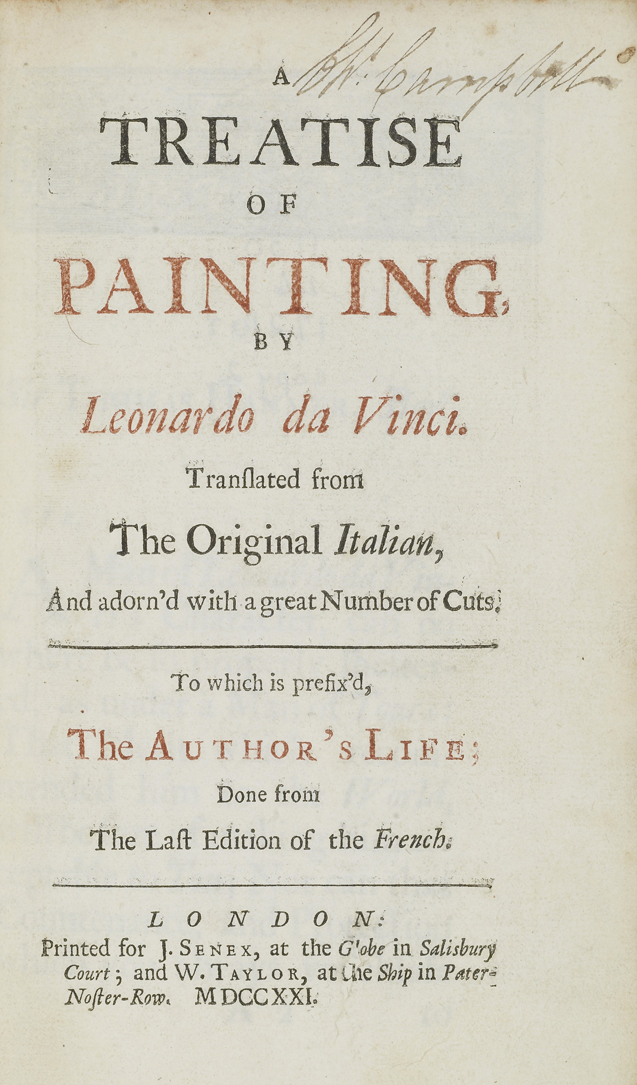
A Treatise on Painting, by Leonardo da Vinci
1721
Senex and Taylor, London
Chapter Display  |
|
The Draperies wherewith your Figures are Cloath'd, ought to be so disposed around the Members which they cover, as that there be no Folds or Plaits with obscure Shadows, found on any of the illumined parts of the Figures; nor any Folds that receive too bright and glaring Lights, seen on those parts of the Figure that are shadowed: And further, let both the Contours, and Folds of the Drapery, be so managed, as that in some places, they may follow, and fall in with the natural shape of the parts, which they cover; still avoiding any of those unnatural Contours, which seem to cut and enter within the quick of the Members, with Shadows that are too deep, and indented too far, for the Surface of the Body. Let the Drapery be so accommodated, as that it may not appear a Garment without a Body; that is, a heap of Stuffs or Cloaths put off, and out of use; a Fault too common among the Painters, who are so taken with a great deal of Drapery, thrown into a great many Folds, and Plaits, that forgetting the proper use of Cloaths, which is to cover the parts of the Body decently, and with Grace, they load their Figures instead of dressing them; and make the Members appear like so many Bladders, bloated and blown up, in the parts that have Relievo: Thus making them an easy Prey to the next high Wind that blows. Now the Folds of Drapery are not to be disused, but to be better regulated; being both necessary, and of good effect, provided they be conducted with Discretion, and judiciously accommodated to those parts of the Figure, where the Members, on account of their Action, or of the Attitude of the whole Body, amass, and gather the parts of the Drapery together. Above all, observe, that in Histories, or in Pieces consisting of several Figures, you show a variety in the Draperies; so that if the Folds of some, appear gross and stiff, as if the Cloth were thick and stubborn, let the Folds of others, sit closer and more neatly, as consisting of a finer Thread; the sides and edges of the one, being straighter, and those of the other more indented.